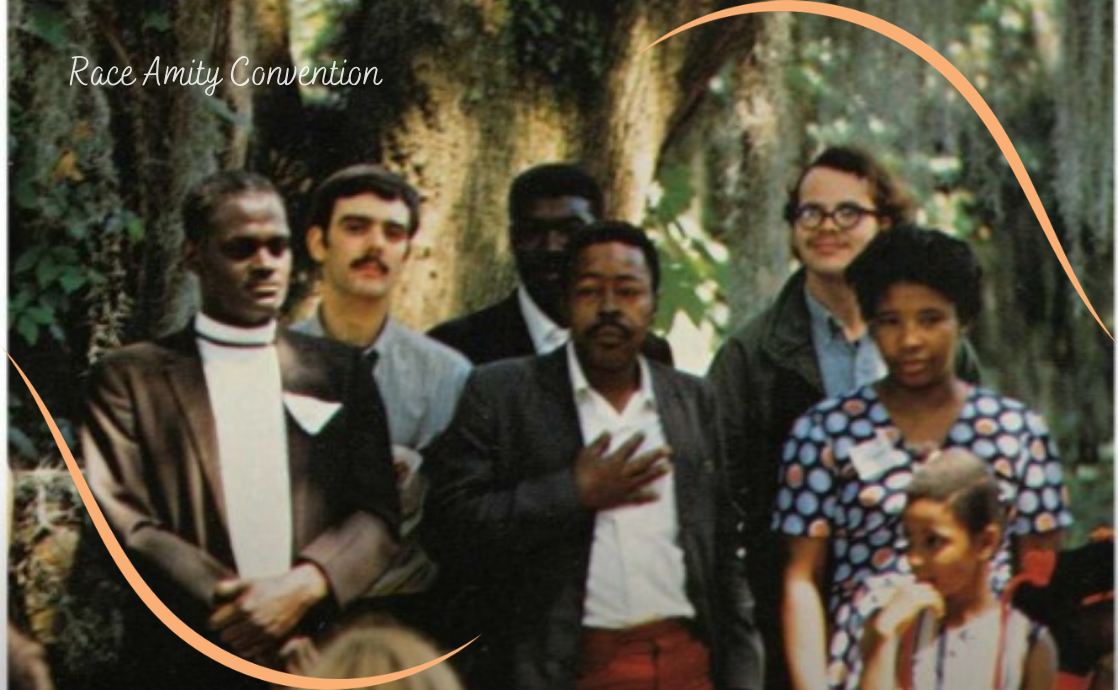The First Convention for Amity Between the Races offers an intriguing glimpse into the dynamics of inter-racial harmony, reflecting a vital aspect of the Baha’i teachings. One might pose a playful question: what if, instead of segregation, humanity embraced its diversity, fostering a unity that transcends national, racial, and cultural boundaries? This question paves the way for a profound exploration of a convention rooted in a quest for spiritual and social communion among disparate races.
The historical backdrop of the First Convention for Amity Between the Races is both significant and poignant. Conceived in a time when racial discrimination was rampant, this convention emerged as a beacon of hope. The Baha’i teachings advocate for the essential unity of humankind, asserting that differences in race should not be a source of discord but a means to enrich human experience. The vibrancy and variety of cultural expressions can be seen as a tapestry, beautifully woven together with threads of different hues and lengths.
Understanding Racial Unity
At the heart of the Baha’i teachings is the principle of oneness. This manifests within the concept of racial unity, which posits that all humans belong to a single family. The First Convention sought to underscore this tenet, addressing the urgent need for understanding and acceptance among racial groups. This call for unity is not merely an idealistic vision; it serves as a necessary corrective to the societal ills wrought by prejudice and seclusion.
The Baha’i worldview encourages individuals to reflect on their attitudes towards others. Are the ideals of racial equality prevalent in our daily lives? This self-examination can lead to meaningful dialogues that traverse beyond superficial interactions. In recognizing our shared humanity, we embark on the path of constructive engagement rather than divisive rhetoric.
Historical Significance of the Convention
The First Convention for Amity Between the Races was pioneering in its assembly of thinkers, spiritual leaders, and activists who prioritized the imperative of racial reconciliation. This gathering was not limited to theoretical discussions but was imbued with actionable strategies aimed at dismantling systemic barriers that perpetuated racial divides. As each participant contributed unique perspectives, the convention fostered a rich dialogue that encouraged collaboration across racial lines.
Furthermore, the convening served as an exemplar of how diverse groups can come together to address common grievances. The historical implications of this convention transcend its temporal context, offering valuable lessons applicable to contemporary struggles against racism and discrimination.
Social and Spiritual Dimensions
The interplay between social dynamics and spiritual principles is paramount in the Baha’i teachings. The First Convention adeptly illustrated this relationship, emphasizing that social transformation is inseparable from spiritual evolution. To foster amity between races, it becomes essential to cultivate virtues such as compassion, patience, and understanding within ourselves and our communities.
Moreover, the importance of education should be highlighted. Not only does education serve to enlighten individuals about the histories and cultures of others, but it also plays a critical role in dispelling myths and misconceptions that fuel prejudice. As Baha’is advocate, teaching about racial equality is not merely an academic exercise; it is a moral obligation that nurtures a culture of acceptance.
Challenges in Promoting Racial Harmony
Practical Steps Toward Racial Amity
The success of any initiative aimed at promoting unity among races hinges on pragmatic actions. Community engagement initiatives can serve as platforms for dialogue, inviting individuals to share experiences and narratives that reflect the diversity of human existence. Furthermore, collaborative projects between diverse racial groups can forge meaningful relationships that celebrate rather than diminish differences. Activities such as cultural fairs, joint charitable efforts, and discussion forums can galvanize collective action towards fostering harmony.
Baha’is also emphasize the significance of spiritual education. Engaging with individuals in discussions about the spiritual principles underlying racial unity can catalyze change. Programs that explore the moral imperatives of the Baha’i Faith related to equality can enlighten participants on the ethical responsibilities we have to one another as global citizens.
Conclusion: Envisioning a Harmonious Future
The First Convention for Amity Between the Races serves as an enduring symbol of hope and a blueprint for action. By embracing the foundational teachings of the Baha’i Faith, individuals and communities are encouraged to dismantle the barriers of prejudice and embrace the exquisite diversity of humanity as a source of strength. It is a call to envision a future where races do not merely coexist but collaborate in the building of a just and harmonious society. The journey towards racial unity is ongoing, demanding both introspection and action regarding how we as individuals and collectives navigate the complexities of human relationships.
